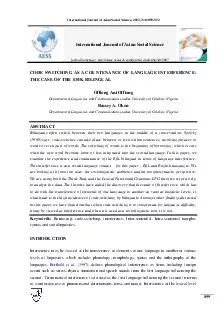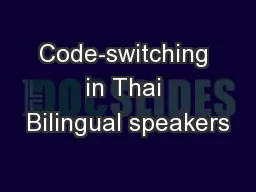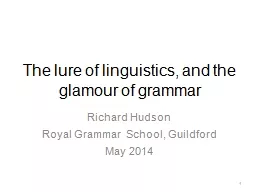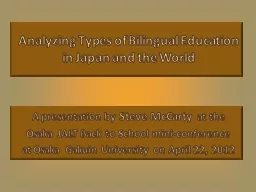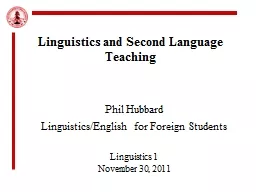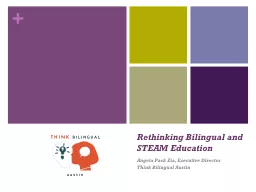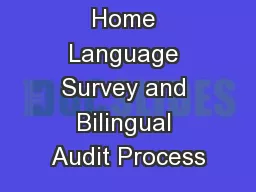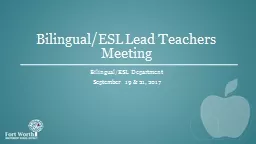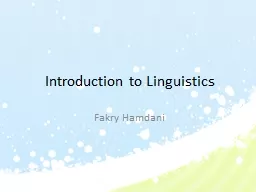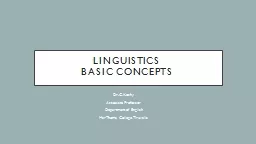PDF-International Journal of Asian Social Science CODE SWITCHING AS A COUNTENANCE OF
Author : debby-jeon | Published Date : 2015-03-12
Okon Department of Linguistics and Communication studies University of Calabar Nigeria ABSTRACT Bilinguals often switch between their two langu ages in the middle
Presentation Embed Code
Download Presentation
Download Presentation The PPT/PDF document "International Journal of Asian Social Sc..." is the property of its rightful owner. Permission is granted to download and print the materials on this website for personal, non-commercial use only, and to display it on your personal computer provided you do not modify the materials and that you retain all copyright notices contained in the materials. By downloading content from our website, you accept the terms of this agreement.
International Journal of Asian Social Science CODE SWITCHING AS A COUNTENANCE OF: Transcript
Download Rules Of Document
"International Journal of Asian Social Science CODE SWITCHING AS A COUNTENANCE OF"The content belongs to its owner. You may download and print it for personal use, without modification, and keep all copyright notices. By downloading, you agree to these terms.
Related Documents

